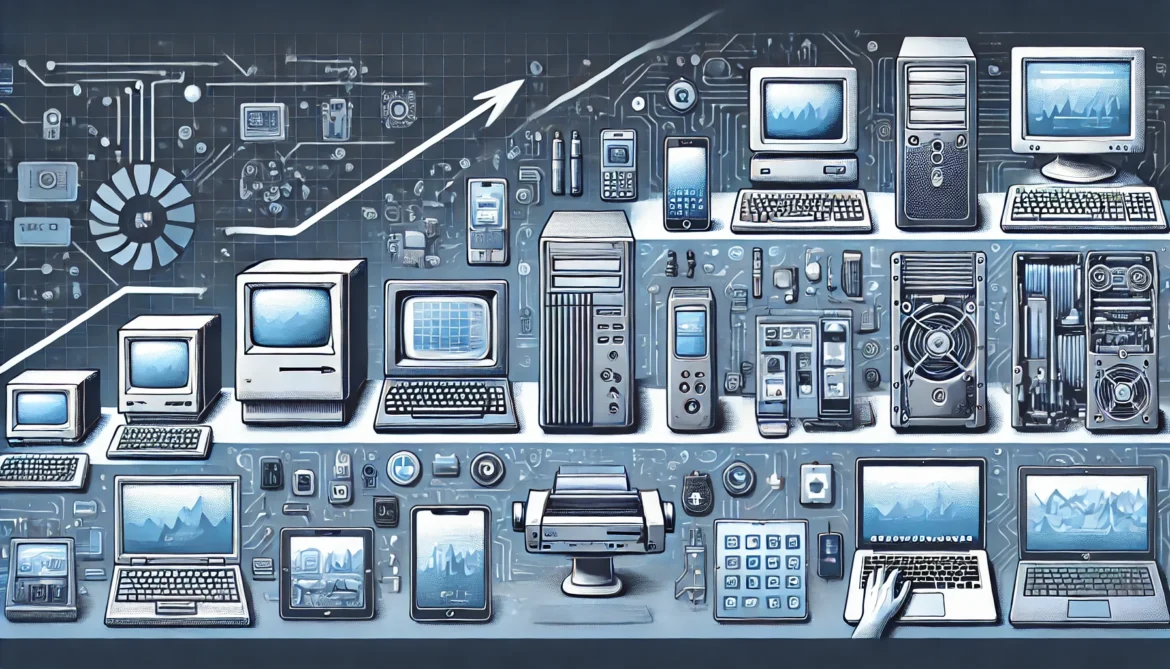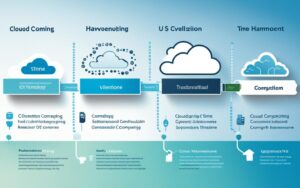Table of Contents
Making personal computations in the hi-tech world has become an essential facet of existence. From bulky mainframe computers to personal computers, laptops, and today’s smartphones, the revolution in technology has been nothing less than extraordinary. This article explains the rather interesting evolution of personal computing and the social effects inferred by this technology.
Origins and Early Developments
Personal computing dates back to the mid-twentieth century, headed by the mainframe computers. These giant machines, which took up an entire room, were the first attempt at removing computational resources from academic and government use.
They were primarily applied in problem-solving, especially when there was a need to perform extensive calculations and data analysis. This advancement enabled placing all the necessary constituents of a computer on a single chip, thus cutting the size and costs substantially.
Gaming and Entertainment Revolution
Personal computing increased the popularity of games and entertainment, while the standard form of gaming in the 1980s and early 1990s was text-based adventures on early PCs, the gaming industry has expanded exponentially.
Cores, graphics processing units (GPUs), and separate game consoles have expanded the opportunities in terms of visual graphics and game controls. The social and technological advancements in networks and digital media have shifted the traditional ways of playing games and formed cross-sections and professional leagues of gaming.
Security Challenges and Innovations
With the increase in personal computers and the World Wide Web, security issues were seen. Users or organizations are in for numerous reasons, be it a virus, malware, data leak, or identity theft.
Advancements in encryption, biometrics, and artificial intelligence in threat detection are constantly advancing to protect one’s data and privacy. The conflict between convenience and safety options has remained complex even within the modern digital world.
The Impact on Environment and Sustainability
The issues experienced with the manufacturing and disposal of personal computing devices involve e-waste and carbon emissions. With consumers and businesses becoming much more conscious about their impact on the environment, the processes of creating efficient hardware and software have begun.
Support recycling programs and lessen the amount of electronic waste that negatively impacts the environment. The pressure toward Green IT computing solutions is directing the evolution of the future technology.
Education and Digital Literacy
Personal computing has opened up education and information to everybody. With e-dulling and e-readiness, learning has gone online, from online courses to digitalized textbooks to interactive platforms.
Skills involving internet use, like coding, critical thinking, and safer internet use, are common knowledge in the digital era. Programs are pushing for subjects such as Science, Technology, Engineering, and Mathematics to ensure that future children will be ready for technology-based careers such as trade CS2 skins.
Personal Computing in Healthcare
There have been significant improvements in using personal computers to solve healthcare challenges such as; EHRs, telemedicine, and wearable health devices that allow healthcare practitioners to monitor the patient’s condition from a distance and develop treatment plans tailored to the patient’s specific needs.
It avails AI diagnostics and medical imaging that optimizes diagnosis in medical procedures and practices. Personal computing has integrated with healthcare and has continued to stimulate progress in the quality of life and healthcare services worldwide.
Accessibility and Inclusivity
Personal computing has truly revolutionized accessibility for people with disabilities. Screen readers, voice recognition, and adaptive peripherals help users interact with a digital environment or do their work without assistance. Ample consideration of the needs of the targeted user base, as well as compliance with accessibility laws, guarantees equal access to technology for persons with disabilities.
The Use of Privacy Concerns and Data Protection
Social networking sites have immensely favored the process of sharing personal information, but at the same time, various privacy and data security issues have emerged. Some of the controversies on technologies include data mining, surveillance technologies, and how large corporations collect personal information from consumers. Current legal initiatives such as GDPR in Europe and CCPA in America provide a guide on how to protect users’ privacy and how organizations shall practice it.
Work from Home and Global Digital Tourism
Development in computer technology has enhanced working from home/ remote work and even so-called ‘digital nomadism’. In light of today’s advanced technological features like the Cloud, people can work from any part of the world, and collaboration tools and video conferencing implement strong advertisements of distant work.
The COVID-19 pandemic elevated this pattern, showcasing the adaptability and efficiency of depot work prearrangements. Increased cases of working remotely mean that personal computing is gradually eradicating the conventional perception of work-life balance.
Economically and Technologically Dependent Business Threats of AI and Automation
AI and automation incorporation in personal computing devices present questions on the origin of algorithms, joblessness, and legislation on decisions of automation. Balancing the use of technology in peoples’ lives and being ethical permits AI-based personal computing to improve the lives of people and society in general while avoiding negative impacts.
The Impact of Personal Computing on the Social Interaction
This selfish area of technology dragged intricate changes to the social model and the relations of individuals. They are creating a new world of social business connections, virtual neighborhoods, and communication on the World Wide Web. The main trends in constructing influencer culture, the role of digital activism, and tendencies within the netizen’s online interactions stemmed from the influence of personal computing on the formation of modern cultural and social interactions.
In the same way as the practice of many things, the aspect of the social becomes crucial in shaping the attempts to use actual technology construction for creating an inclusive society and invoking the principles of digital citizenship.
The spirit of the digital age of computational creation and digital aesthetics
Individual home-use technology has adopted arts and designs in computers and other GUIs. Graphic design and web design, photo editing, music creation, video editing, and numerous other talents are practiced and nurtured by technology. AI intersects with creative industries or creations: These are works or products designed to create new original art, music, and even literature using ultra-contemporary methods such as AI.
Personnel Computing in Space Exploration
Advances in the ability of personal computers have helped advance the technologies related to space exploration. From the planning of a specific mission and the path that is to be followed by a spaceship or satellites up to the moment the received information is analyzed, and even the connection with the Earth is made, computers are employed.
Small sizes of computing elements and the progress made in AI allow the performance of tasks without human interference and without the necessity of time-sensitive decision-making in space conditions. Personal computing continues to facilitate humanity stepping out of the Earth’s atmosphere.
Private Sector on PC and IT in Agriculture and Food Security
Personal computing technology of the post-contemporary age offers new creations in agriculture and food security. Concerning general usage, extensive data farming and data analysis enhance crop production, soil condition, and water use.
Application through mobile phones and based on core platforms enables the timely provision of information to farmers, which is a situation where efficiency and sustainable practices dominate agriculture activities.
Conclusion
Personal computing remains an active development area for applications across multiple fields, from combating disasters to expert trading methods such as trading CS2 skins. Integrating new technologies and coping with ethical issues and sustainability risks will define the future of personal computing as an enabler of enhancing people’s lives and organizations’ impact on society and the environment positively.









